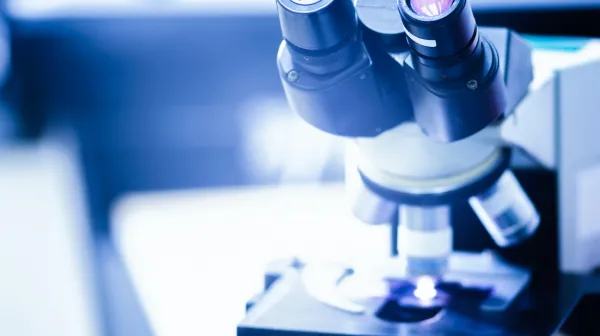Mutations in an early embryonic development gene may cause female infertility

A team of researchers headed by Dr. Ignatia Van den Veyver, professor and at Baylor College of Medicine, director of clinical prenatal genetics and investigator at the Jan and Dan Duncan Neurological Research Institute at Texas Children’s Hospital, have shown that mutations in an early embryonic development gene may provide some clue to unexplained female infertility and recurrent pregnancy loss. The study was published in Scientific Reports, a member of the Nature family of journals.
Unexplained infertility and recurrent loss of pregnancy are very common among women of child-bearing age. However, no definitive cause can be attributed in up to about 10 to 15 percent of couples with infertility and 50 percent of women with recurrent pregnancy loss. Based on observations in human patients and animal models, it is known that mutations in genes that encode proteins of a large multimeric complex called the subcortical maternal complex (SCMC) can lead to reproductive failure. SCMC is present in the female germ cells (oocyte) and is critical for all the molecular events that are responsible for the seamless transition of an oocyte to a zygote, the fusion product of the male and female germ cells, which eventually develops into the embryo.
Researchers have found that women carrying mutations in some of the NLRP genes, that are part of the SCMC, have recurrent pregnancy loss due to abnormal development of placenta, embryonic loss prior to implantation and rarely, may have a baby with developmental disabilities.
“Women carrying these mutations are otherwise healthy and so, they are unaware that they carry these mutations which can make them infertile or unable to successfully carry a pregnancy,” said Dr. Sangeetha Mahadevan, postdoctoral associate and first author of the study.
To investigate the mechanisms by which mutations in NLRP2 and NLRP7 affect reproductive success and fertility, in this study, the Van den Veyver team created a mouse model to mimic these mutations. Humans have two versions of NLRP gene - NLRP2 and NLRP7 whereas mice only have Nlrp2, which may functionally compensate for both.
They found that mice genetically engineered to lack the Nlrp2 gene were completely normal. However, when they mated Nlrp2 females, they observed three different types of outcomes: some did not get pregnant, others had stillborn pups with abnormalities and a third group of females gave birth to live pups of normal appearance, but fewer per litter. Some of the pups were smaller or larger than expected. Thus, there was a spectrum of reproductive outcomes when the females lacked the Nlrp2 gene. However, when male mice lacked the gene, there was no impact on fertility or offspring.
Based on previous studies, the researchers knew that DNA methylation of normally methylated imprinted genes, was absent in pregnancies of women with mutations in the NLRP7 gene. Chemical modification of DNA via methylation DNA helps determines whether a gene will get turned on or not.
Interestingly, offspring of mice lacking the Nlrp2 gene also expressed abnormal DNA methylation patterns, which suggested that NLRP genes in animal and human models may likely function via similar mechanisms.
They found that when the Nlrp2 gene is absent or inactive in the mother, the SCMC does not form properly anymore in the egg and that, in addition, one of the proteins that plays a role in DNA methylation seems not to be in the right place in early embryos, which might help explain the disturbances in DNA methylation observed in offspring of female mice lacking Nlrp2.
After the egg is fertilized and begins to divide, there is a period of time during which the fertilized cell and early embryo rely heavily on the proteins and other compounds that the egg has stored in SCMC to carry on essential functions – including DNA methylation – until the embryo can switch on its own genes. These stored compounds are all of maternal origin.
This study shows for the first time that the NLRP2 protein is part of this important cellular complex, providing more support to the idea that the complex is critical for fertility and embryonic development, which are in part regulated via DNA methylation.
Further, the researchers also investigated whether lack of the Nlrp2 gene in mouse eggs would affect their survival when cultured in the lab. This is relevant to in vitro fertilization, a procedure in which eggs are collected and cultured in special conditions in the lab in preparation for fertilization.
“When we attempted to grow the eggs of a female mouse carrying the mutation in the Nlrp2 gene in an artificial environment in the lab, they did not develop,” said Mahadevan. “This finding has implications for in vitro fertilization. It is important to recognize that there will be women who may not be candidates for this procedure because their embryos would likely be unable to grow in culture as a result of the females carrying these mutations in NLRP genes.”
“I think that in addition to establishing a connection with fertility and pregnancy loss, understanding these basic early mechanisms associated with NLRP genes is very important for developmental disorders in general, and particularly for those with DNA methylation abnormalities,” Van den Veyver said. “It is a very rare human condition with a very unique mutation that teaches a lot about different aspects of development.”




